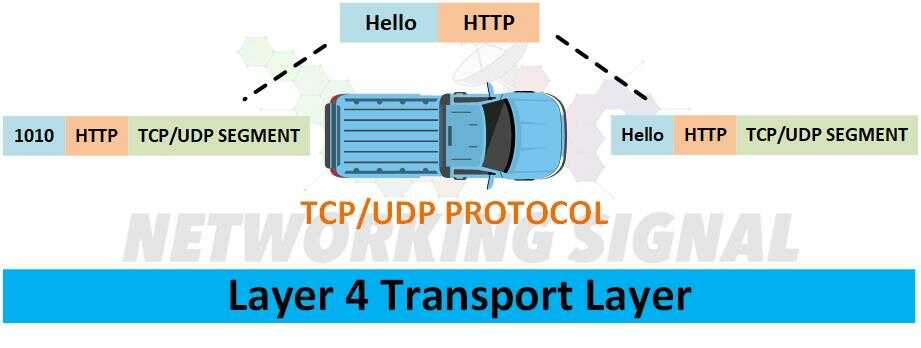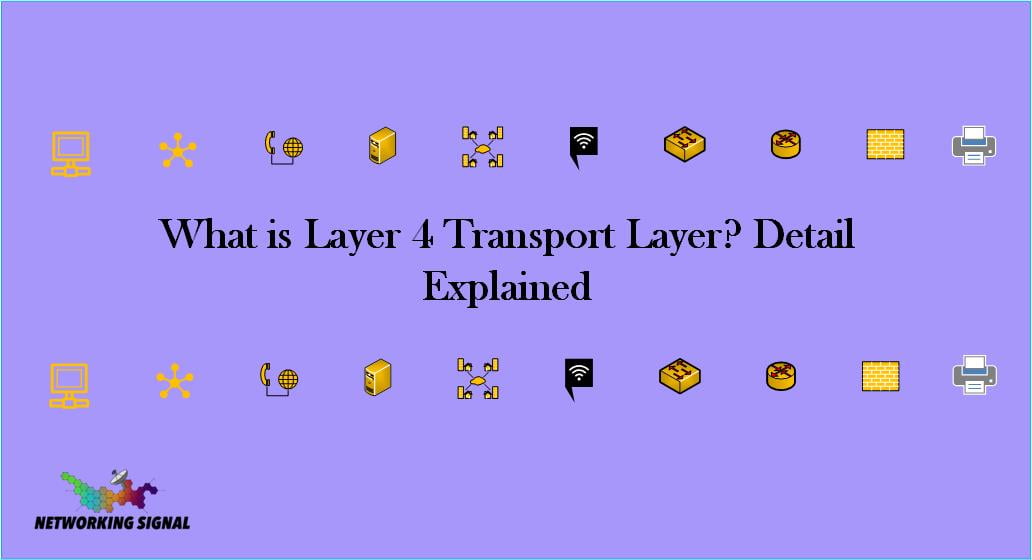What is Layer 4 Transport Layer?
The Layer 4 Transport Layer is the fourth layer of the Open Systems Interconnection (OSI) model. This layer provides end-to-end communication services such as reliable delivery, flow control, congestion avoidance, and multiplexing. The protocols used at this layer are responsible for setting up virtual circuits between two systems in order to deliver data reliably and efficiently.
- Examples of these protocols include TCP, UDP, SCTP, and DCCP.
By using the Layer 4 Transport Layer to establish connections between two systems, data is assured safe arrival at its destination with minimal disruption or error. This layer also provides mechanisms for application-level flow control and congestion avoidance in order to ensure the smooth transmission of data over the network.
Ultimately, the Layer 4 Transport Layer is responsible for ensuring that data gets from one node to another in a reliable and efficient manner.
What is the Type of Transport Layer?

The most commonly used protocols are Transmission Control Protocol (TCP) and User Datagram Protocol (UDP). TCP is a connection-oriented protocol that provides reliable data delivery, while UDP is a connectionless protocol that provides faster throughput but less reliable delivery. Other options include Stream Control Transmission Protocol (SCTP) and Datagram Congestion Control Protocol (DCCP).
Each of these protocols can be used to transport application layer data over the internet. Each protocol has its own strengths and weaknesses, so it depends on what type of application you’re running and which one is more suitable for your needs.
What are the Features of the Transport Layer?
The Transport Layer provides a number of features essential for the reliable and efficient delivery of data across the network. These include:
- Reliable end-to-end delivery: Once data is sent, it will be guaranteed to arrive at its destination without being corrupted or lost.
- Flow control: The protocol used by this layer will adjust the rate of data transfer in order to ensure that the receiver is not overwhelmed.
- Congestion avoidance: The protocol used by this layer can detect congestion and reduce its own traffic accordingly. This is essential for keeping the network running smoothly.
- Multiplexing: The Transport Layer has the ability to handle multiple simultaneous connections. This allows multiple applications to use the same physical connection at the same time, reducing network congestion.
- Infrastructure support: The Transport Layer is responsible for establishing virtual circuits between two systems. This ensures that data can be routed reliably and efficiently from one node to another.
How We Can Protect the Transport Layer?
The Transport Layer can be protected in a number of ways.
- Firewalls
- Encryption Protocols
- Intrusion Detection Systems (IDS)
These are important tools for protecting the data that is sent across the Transport Layer. Additionally, there are certain best practices that can be followed to ensure that the data being sent over this layer is kept confidential and secure.
Firewalls can be used to filter out unwanted traffic and block malicious attacks.
Encryption Protocols are essential for protecting data in transit, as they can help ensure that the data is not readable by anyone other than its intended recipient.
Intrusion Detection Systems (IDS) can alert administrators of any suspicious activity on the network, allowing them to take action quickly.
Network administrators should make sure that the protocols used by the Transport Layer are kept up-to-date with the latest security patches. This is essential for ensuring that any vulnerabilities in the protocol cannot be exploited by malicious actors.

